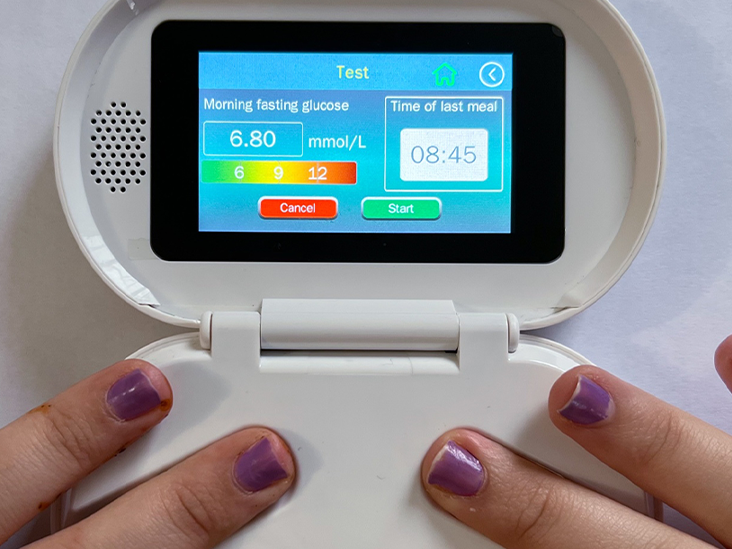This is not a wearable device or patch, but is rather more similar to a traditional glucose meter that you buy and have on hand to use as needed. It is a small handheld pad that folds in half, with the fingertip scanning portion on the lower end and the screen showing data results at the top.
To use it, you power on the device and just need to keep two fingers of each hand on the device when you want to check your blood glucose levels. The first prototype model generates results in 60 seconds, but Scanbo is working to reduce that to 30 seconds.
Scanbo uses a chargeable battery, with an expected battery life of 3 years.
It collects data using two different measurements, most often used for monitoring heart rates:
With the Scanbo glucose monitoring sensor pad, both of those are applied at the same time — rather than sequentially, as is usual. The data is sent to the cloud, where it’s analyzed using the Scanbo AI algorithm to generate a result. The numbers can currently be viewed on the device, and Scanbo is also developing a smartphone app that will display results and also control the device.
The device currently provides an audible reading of your glucose level, and Scanbo plans to introduce voice-guided instructions in the future smartphone app as well.
The company has a provisional patent in the United States Patent and Trademark Office and is planning to extend that to other countries. Scanbo is not yet available in other countries, as the company plans to launch first in the United States.
Scanbo says it is currently raising money to begin clinical trials and apply for an initial 510(k) filing with the Food and Drug Administration (FDA). Should that happen as planned, the company ambitiously hopes to begin the FDA review process by mid-2022.
The company says it’s too early for finalized pricing detail, but one model it’s exploring involves a one-time device payment followed by a monthly subscription for the AI cloud — potentially as low as $20 a month.
The company says another piece of their patent-pending algorithm covers noninvasive blood pressure and heart rate monitoring as well, using an arm cuff attachment.
This content was originally published here.

